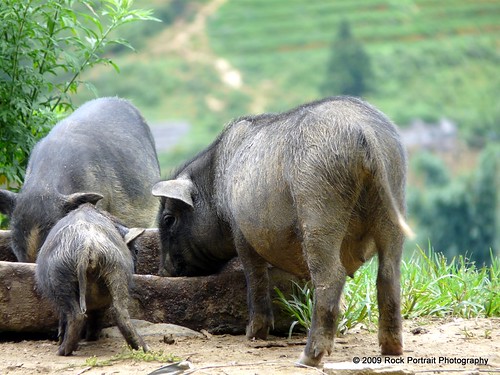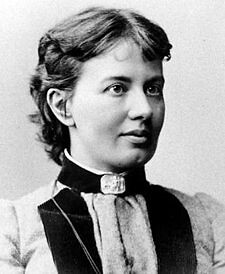Pigs feeding at a farm in Vietnam: Small-scale farmers remain crucial to the growth of Vietnam’s pork industry (photo from Flickr by Stephen McGrath, Rock Portrait Photography).
A project that evaluated pig production and marketing in Vietnam shows that supply shortages could be responsible for the current high prices of pork in the country. Supporting small-scale farmers to produce more pigs and improving pork distribution and marketing chains could hold the key to keeping rising prices of pork in the country in check.
Between December 2010 and June 2011, Vietnam experienced a 22 per cent rise in the food price index (a measure of the monthly change in international prices of a basket of food commodities). A spike in the prices of pork, a key part of the Vietnamese diet, was largely responsible for this rise in food costs. Government and pork industry players in the country have blamed the rise in pork prices on both unregulated pork exports to China through cross-border trade and a rise in global food prices generally.
Even though industry stakeholders, including the government, say importing more meat and supporting large commercial producers will stabilize the pork market in Vietnam, research suggests that developing large farms to address supply constraints will not solve the price problem over the long-term. According to the project, which was carried out between 2007 and 2010 in Ha Noi, Ho Chi Minh and six of Vietnam’s provinces, large farms will provide ‘only a small share over the next decade, offering only up to 12 per cent of [the country’s] total pork supply.’ The project, titled ‘Improving competitiveness of smallholder pig producers in an adjusting Vietnam market’, was funded by the Australian Centre for International Agricultural Research (ACIAR) and the Consultative Group on International Agricultural Research (CGIAR).
Many pressing challenges face the Vietnamese pork industry, including increasing feed prices and demand for pork, poor management of the pork value chain, concerns about pig diseases, difficulty finding piglets and other inputs and poor veterinary and credit services.
‘Demand for pork in Vietnam is growing faster than its domestic supply,’ said Lucy Lapar, an economist with ILRI in Vietnam. ‘What our research found was that the recent steep rise in the pork price is most likely a result of inefficiencies along the value chain rather than a critical shortage in pork supply. Normally, high pork prices might encourage pig farmers to expand their production, but in this case, despite the high prices, farmers seem hesitant to raise their pork production,’ said Lapar.
Small-scale farmers in particular worry about pig diseases and the difficulty they face in getting hold of piglets and support services. ‘We need to find ways to address these constraints and bring about substantial improvement to the pig production system,’ said Lapar. ‘Even though efforts by those involved in the pig industry are focusing on increasing large-scale farming of pigs, they must not neglect smallholders who will almost certainly continue to play a significant role in meeting the growing demands for pork in Vietnam in the near future.’
Vietnam’s smallholder pig producers will remain viable because they are able to produce pork at lower costs than large-scale farms by using household scraps and other feeds that would otherwise be unused and thus do not need to rely on feed imports. These practices make small-scale pork production efficient in the long term, translating to better pries for consumers.
‘A combination of small household producers and large pig producers is most efficient for Vietnam at this stage of its pork industry’s development,’ says Lapar. The implications from this project’s findings suggest that the Vietnamese Government and pork industry players should put in place systems and practices that make the pork value chain more efficient and support markets for both small and large producers in the country.
—
To read more about the project and its findings, visit: https://www.ilri.org/PigProducers and https://cgspace.cgiar.org/handle/10568/606/browse



